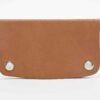Blogging is such a great outlet for your thoughts, passion or even for your work and so whenever anyone asks me if they should start a blog, my default answer is always a YES! I know people start blogs for different reasons but I think the best reason to start blogging is fundamentally to share something with other people.

The aforementioned people could range from a friend who lives in a different country 1,000s of miles away, other enthusiasts like yourself who share similar interests or even just for yourself as an online diary you don’t mind sharing with the world. Whatever the reason is, if the idea of blogging has crossed your mind more than once then my advice is to get started with your blog now! 
I’m assuming that I’ve convinced you and you’re ready to start blogging now. “What do I need to do?” you ask. I’ll walk you through it all! 🙂
The Preamble

Decide what you want to blog about: Travelling, Fashion, Game of Thrones, Home Design, All the foods you’ve ever eaten and those you really want to eat – the choices are endless. Figure out what you want your blog to be about (which should be fairly easy as you probably already know what drove you to want to start blogging) and go from there. In truth, you don’t need to focus on a specific subject – perhaps you just want to blog about random musing that crosses your mind or about things you’ve seen that puzzle or excite you – the point is to decide on what it is you want to say. 🙂



Decide on a blog name: Once you decide on what you want to blog about, figure out a name that best encompasses your blog/personality/topic of interest. Some of the best names are those that tell a reader what your blog is about even before they start to read or those that are so specific to you that even before you decided to blog, you already knew that this was going to be your blog name. Try to keep it short and simple though. www.MyBlogAboutAllTheThingsIWantToEatTodayAndTheThingsIAteYesterday.com, for instance, might be somewhat of a long (and impractical) name…
The 7 Simple Steps

1.) Choose a domain name

This should, of course, be similar to your blog name though you can get creative here and use names that even further summarise your blog name e.g. hlo.co.uk might have been an alternative we would have used instead of www.HandLuggageOnly.co.uk
2.) Choose your Social Media names

Pinterest, Facebook, Instagram, Twitter… etc are great ways to expand on your blog and interact with people more and as such are essential blogging tools. Try to keep the Social Media names similar to your blog name but more importantly, try to keep this as consistent as possible across all of them.
Unfortunately, I haven’t been able to do this as much as I chose a default name, claimed it on Facebook and found out later that it wasn’t available on other social media platforms so I had to go for a second option! For instance, if you can’t find us at our default @HandLuggageOnly, you can always find us @HLOBlog
3.) Choose WordPress, Blogger or Tumblr

I know there are many other options out there but these are some of the best and most popular out there. Blogger is Google’s blogging platform, Tumblr is..er… Tumblr and WordPress is kinda different as there are two different WordPress options. There is WordPress.com which is the free WordPress tool (similar to Blogger or Tumblr). All you need to do is sign up and you’re ready to go.




Then there’s the Self Hosted WordPress blogging platform which basically involves you owning control over every single aspect of your blog. You decide where your files are stored, the structure of your blog folders and pretty much everything else. If you decide to go for Blogger, Tumblr or the WordPress.com options, you can skip the remaining steps and just head down to the EXTRAS section below. If however, you decide to do the Self-Hosted WordPress option, carry on reading…
4.) Choose a hosting account

This is essentially the company (i.e. the host) that stores all your blog files on the internet. When you first get started blogging, I recommend going for hosts like GoDaddy as they’re fairly reliable without costing too much. Once your blog starts to get more readers though, you will probably find that you need to look towards Managed Hosting more and more as shared services like GoDaddy start to become a bit tedious when you start to put huge pressure on the web host servers.
With Managed Hosting, the company effectively manages the blog for you and you get access to experienced WordPress professionals who can sort out even the niggliest of problems for you. Places like Flywheel (best value!) and Synthesis (pretty good value when you first switch to a Managed host) offer a pretty good service.
5.) Install WordPress

Most hosts have guides on how to do this (which is specific to them) but in truth, installing WordPress is probably the easiest step as every host has a button somewhere in your user account (i.e. control panel) that effectively says “Install WordPress”
6.) Set Up Your User Account(s) and Password

WordPress typically installs with a default user account. The first thing you should do is set up your own account on your new WordPress installation. The second thing is to delete that initial admin user account as hackers will always try to take over your website using those details.
7.) Install a Theme and Plugins

Plugins in WordPress are like apps on your iPhone or Android phone. They basically extend your blog’s functionality and will help you do pretty much everything you need on your blog from increasing the security on your site to installing forums and even setting up an online store! Themes, on the other hand, help you decide on what your blog should look like and there are loads of theme available on the internet (some free and some paid for).
And there you have it! Hopefully, this will give you a rough guide to getting your blog started. If there is anything more specific you want to know, please do ask in the comments section and I will do my best to help out! 🙂
Extra’s to remember…

1.) Claim your BlogLovin account
BlogLovin is hands down the best blog reader out there as you can claim your own blog account and effectively see how people are engaging with your posts. It’s also fantastic for following other blogs and catching up on your favourite bloggers (or perhaps even for saving blog posts to read at a later date).
2.) Set up Analytics with Statcounter or Google Analytics
This way, you have some information on how many people visit your blog, which posts are the most engaging…etc
Check Out The Very Best Of Great Britain!














